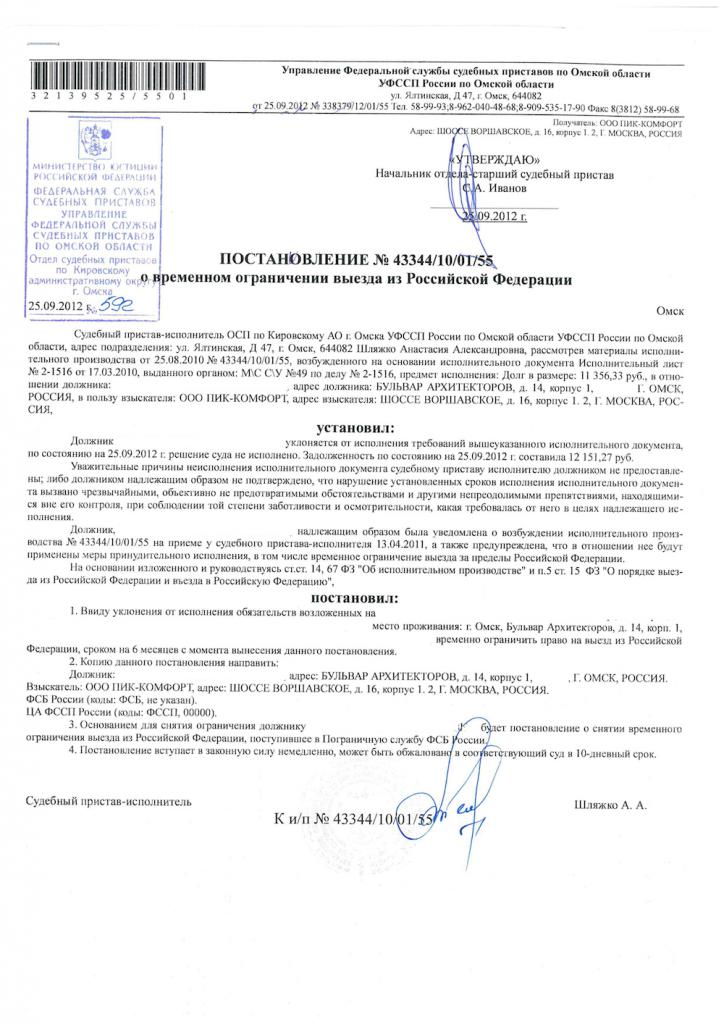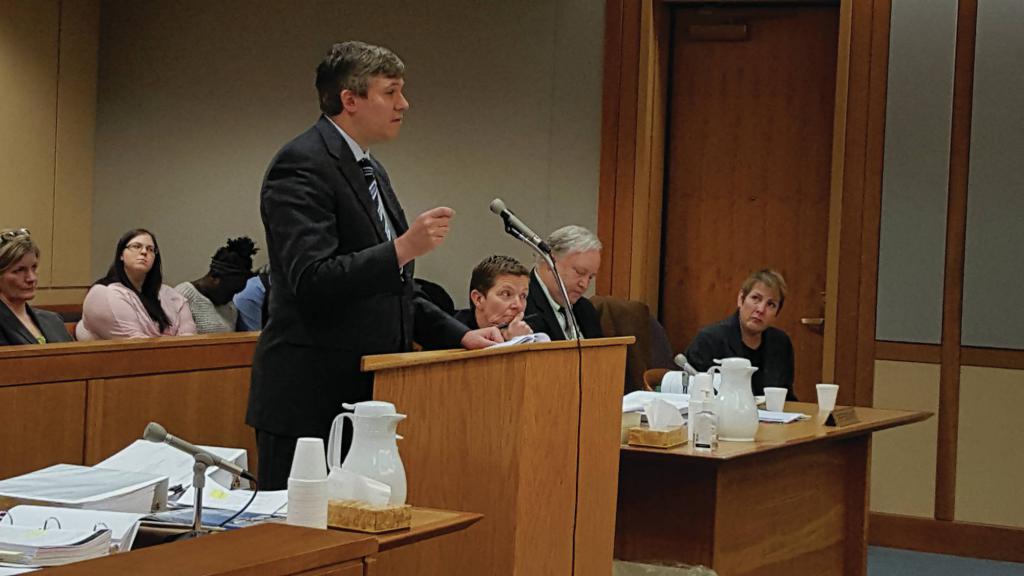What are the decisions of the bailiffs? Authorities and officials vested with powers implement them by issuing special acts. The law imposes special requirements on their content and the procedure for adoption, and provides for the procedure for their cancellation.
Normative regulation
The process of execution of decisions of courts and other bodies aimed at collecting funds is regulated by the laws “On Enforcement Proceedings” and “On Bailiffs”.

They are interconnected, but we will pay attention to the first of them, it explains the requirements for decisions of bailiffs and describes the procedure for their adoption.
There are orders, instructions, regulations, methodological recommendations aimed at assisting service employees in the exercise of their powers.
Why are they made?
The decision of the bailiff is a form of exercising powers within the framework of enforcement proceedings. The authority to accept them is vested in all officials who are in the position of bailiff. This includes both ordinary employees and their superiors, including the country's Chief Bailiff.
Almost all actions within the framework of enforcement proceedings are implemented through the issuance of a resolution, and acts and orders are still being drawn up. If necessary, requests are sent to authorities and organizations. However, the first category has a higher status.
If the action needs to be formalized as a resolution of the bailiff, special mention is made in the legislative acts on this subject.
Clerical system
All actions of service officials are documented, all papers are stapled into the file. Today, the enforcement order of the bailiffs is drawn up on paper and handed over to the person concerned (first of all, to the collector and debtor). The law provides for referrals to third parties (to banks, registration services).

Communication with participants in the process is ensured through personal meetings, sending documents by mail or electronic interaction system. An electronic copy of the decision is considered valid provided that the EDS is certified.
If an electronic form of interaction is used, it does not cancel the preparation of a paper copy for the case, which is transferred to the archive at the end of the process.
Electronic service for citizens
The service has a service that provides a minimum amount of information. For example, only by the number of the order of the bailiff you can find information of interest (who is responsible for the case, amount of debt, etc.). It should be noted that a long time passes between the execution of actions and entering data into the database. Because of which, in order to quickly remove an arrest or other restriction, you should directly communicate with a service employee. For example, having paid a debt, provide him with a receipt or the full amount in cash.
Document structure
The document has the following structure:
- the name of the department or unit in its composition, the address of the office;
- date of adoption of the document;
- indication of the surname, initials, position of the contractor;
- name of the resolution (its essence is mentioned - seizure of property, termination of proceedings, etc.);
- the production number is indicated;
- the issue that is resolved by the bailiff;
- reference to the norms of the law, other regulatory acts;
- decision by the bailiff, adopted on the merits of the issue (to seize, remove restrictions, etc.);
- The procedure and timing of the appeal is explained;
- signature of the official.
Corrections
There is always a risk of errors, descriptions in the preparation of the decision. In this regard, the parties to the process are given the right to request that the document be amended accordingly. If the bailiff noticed a mistake without the participation of citizens, he has the right to correct it on his own initiative. A separate decision is made on the correction.
Adoption procedure
How is enforcement proceedings organized? The bailiff's ruling on certain issues requires approval from the senior bailiff. In particular, with his consent, enforcement proceedings are terminated, penetration into the premises occurs. Admission to a dwelling that does not belong to the defendant requires the permission of the judge.

Without the signature of the senior bailiff, the decision in such cases is not valid. Actions without the official approval of the head are considered an abuse of authority with the corresponding consequences, and lead, including to the initiation of a criminal case.
Official time limits
How do the terms and decisions of the bailiff fit together? The bailiff, for example, having received a statement on the commencement of enforcement proceedings, has 3 days to issue a decision on the initiation or refusal to initiate proceedings.
There are time limits on the adoption of measures prescribed by law. Failure to meet deadlines is the basis for filing complaints with the immediate superior of the official or the prosecutor's office. Loss of time is not a reason to ignore the decision of the official.
Time restrictions for citizens
What powers does the law give in setting deadlines? The bailiff makes a decision taking into account the norms of the law, and does not have complete freedom in this matter.

Participants and third parties involved in the execution process are also required to comply with the decision or requirement within the allotted time. If it is missed, the consequences specified in the decree or in the law occur.
Nevertheless, it is allowed to file an application for the restoration of the term with an explanation of the reasons for missing (it is desirable to attach evidence).
In general, the timing is more important for the ordinary citizen than for the official responsible for the execution of the judicial act.
Binding decisions
Execution of the decision of the bailiff is mandatory for authorities, organizations and citizens. This primarily concerns officials and employees of organizations. Ignoring legal requirements can lead to administrative or even criminal liability for evading the bailiff's requirements and, in fact, a judicial act. For example, an organization’s accountant who does not list part of an employee’s earnings during the execution of a court decision, having previously obtained documents from the FSSP, has a chance of becoming a defendant in a criminal case.
How to reverse an illegal decision
Citizens are given the right to appeal the decision of the bailiff. It consists of two options:
- the complaint is submitted to the head of the department;
- The complaint is filed in a lawsuit in court.
The prosecutor's office is responsible for overseeing the activities of the service and also accepts complaints. The best way is to go to court, more likely to achieve the reversal of the illegal decision.
Submission procedure
The applicant has the right to submit an application within 10 days from the date of the decision or, as soon as it became known. Papers are handed over through the office. If the applicant sent them by mail, they are transferred to the office, and then to a competent person.

Submission of documents by mail is considered the same action if they were handed over to the office. It is advisable to send a letter with an inventory and delivery confirmation.
Review hierarchy
If a complaint is filed against the actions of a senior bailiff, then the chief bailiff of the subject or his deputy will consider it.If the application has already been submitted for the actions of the main bailiff of the subject, the material is considered in the Main Directorate - the main bailiff of the country or his deputy.
If the materials are transferred to the person to whom the complaint is submitted, it is obliged to transfer it to the person authorized for consideration.
The principle of prohibition of consideration of a complaint by a person against whose actions it has been submitted is established.
Complaint structure
The complaint against the decision of the bailiff service is as follows:
- indication of the official to whom the papers are sent;
- position, surname and initials of the person whose actions are appealed;
- Name of citizen or full name of the applicant organization;
- sufficient reasons, from the point of view of the applicant, to consider the decision unlawful;
- reference to regulations, law;
- signature and filing date;
- inventory of copies, attached documents.
The complainant is not required to attach the documents referred to, but their absence will lead to an extension of the period for consideration. Given the workload, the inclusion of supporting materials is a more correct step.
An unsatisfactory decision is essentially appealed to either a superior or a court. Rejection does not essentially mean due to non-compliance with the deadlines and appeal procedure. The administrative complaint on the incorrectness of the size of the price of property approved by the bailiff is not considered.
Going to court
An application to the court is considered the most effective way to assert your rights. Interestingly, having received a copy of the claim and a subpoena, service representatives often annul their illegal decision even before the judge considers the dispute.

Materials are considered in the manner prescribed by CAS (appeal against actions of officials). The appeal period is the same - 10 days from the moment it became known about the violation.
Claim Structure
The lawsuit has the following structure:
- name of the district court where the claim is transferred;
- Full name of the plaintiff, place of residence, date of birth of the plaintiff;
- information about the availability of legal education;
- Name of representative, information on his legal education;
- full name of the department or management of the FSSP;
- an indication of the position, surname, initials of the bailiff - the defendant, who issued the appealed decision;
- indication of the number, date of the decision;
- information about the executive document, in connection with which the appealed act was issued;
- reference to regulations whose provisions are violated or ignored;
- information on filing a complaint in the order of subordination;
- a demand for evidence to which the plaintiff does not have access;
- the requirement to declare the decision unlawful and annul it;
- list of attached documents;
- receipt of payment of the fee for going to court (complaint in the order of submission is not paid);
- Signature and filing date of the claim.

A set of documents is submitted to the court according to the number of participants in the future process: one for the court, one for the bailiffs.
Finally
The bailiff makes a decision in the prescribed manner, the document must have the details specified in the law. The decision is issued in writing, it is allowed to take them out in electronic form.
The law allows you to appeal the decision of the bailiff in the subordinate order or in court.
